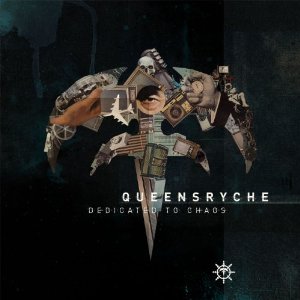 1. The Monster is Loose
1. The Monster is Loose2. Blind as a Bat
3. It's All Coming Back to Me Now
4. Bad for Good
5. Cry Over Me
6. In the Land of the Pig, the Butcher is King
7. Monstro
8. Alive
9. If God Could Talk
10. If It Ain't Broke Break It
11. What About Love
12. Seize the Night
13. The Future Ain't What It Used To Be
14. Cry to Heaven
Third Time's The Charm – 8,2/10
Meat Loaf was just doing his thing with all kinds of other albums when suddenly, out of the blue, the third installment in the Bat Out of Hell series was announced. Even noted composer of the first two albums in the series Jim Steinman was apparently caught off guard as lawsuits between the two occurred soon after. What was Meat Loaf thinking using the Bat Out of Hell name for a third time, and this time without new genuine material from his longtime friend Steinman?
Our dearest Meat Loaf has carefully picked a few Steinman songs from the past that he would cover on this album. It was a Bat Out of Hell album after all and it required some over-the-top rock ’n roll epics. Most of it, however, was taken from Steinman’s solo record Bad for Good from 1981 and Pandora’s Box’ sole album Original Sin from 1989. Other tracks like “Cry to Heaven” or “In the Land of the Pig” were demos for a Batman musical due in 2003, but which was cancelled eventually. Steinman’s songs are huge and make the Bat Out of Hell part of this record. The other half is taken care of by notable songwriter Desmond Child and his team. This is what makes the Monster Loose. They introduce a new, catchy, modern rock sound for Meat Loaf that makes him almost sound nu-metal at times. The combination is very refreshing and actually just what the Bat-franchise needed. Where Bat 1 was a downright classic, Bat 2 was a dull attempt at copying part 1 and Bat 3 makes a suiting close to the series and ends it on a high level.
“The Monster is Loose”! Deep, heavy guitar riffs welcome us into this dark track and a bombastic chorus totally masks Meat Loaf’s usually light and cheerful atmosphere. If the name wasn’t on the album cover, we’d hardly recognize his voice. “Blind as a Bat” continues on the dark, modern vibe the title track ignited and shows us Desmond Child has penned Meat some tunes totally equivalent of the post-1977 songs by Jim Steinman, who debuts on this album with 1989’s “It’s All Coming Back to Me Now”, made famous by Céline Dion. Meat’s rendition sounds very theatrical as he engages in a duet with Marion Raven. The second Steinman track is “Bad for Good”, featuring Brian May on guitar. This track was actually meant for the second Meat album and you can hear this old school rock ‘n roll vibe throughout, but the modernized sound doesn’t conceal the song’s a downright epic with energetic themes. Had they used this for Bat 2, that album would’ve been a lot better. These first four songs show the beautiful contrast between Child’s darker, heavier and more modern songs and Steinman’s over-the-top stash of melodic, theatrical rock ‘n roll.
Other notable moments on the record are the previously unheard Steinman track “In the Land of the Pig, the Butcher is King”, featuring the celebrated Steve Vai on lead guitars. It contains some good punch and a haunting atmosphere that fits this record’s dark environment. Desmond Child delivers to highlights with the catchy “Alive” and the gripping “If God Could Talk”. These songs have those bombastic choruses that get stuck in your head without becoming nuisances, if you know what I mean. Steinman again proves himself a master with 1989’s magnum opus “Seize the Night”; a beautiful orchestra introduces the piece that goes through many themes; from small piano-driven passages to dark symphonic rock riffs; from traditional Steinman verses to Latin-choirs at the chorus. From the songs not mentioned, they are almost all a joy for the ear. With talented songwriters like Child and Steinman delivering some of their finest works on this record, you will hear only one track you might want to skip. “If It Ain’t Broke, Break It” is a rock song by Steinman, but has a very weak chorus trying to be heavy and hard but failing completely on both platforms.
In the end, Bat Out of Hell 3: The Monster is Loose is the ultimate classic of modern Meat Loaf. It contains al the Steinman-ness of the previous Bats in high quality, but doesn’t lose its potential of being a rock album first and foremost; something which Meat Loaf is focusing on a lot on his newer records. It’s what I’d call a suitable disclosure for the Bat Out of Hell series and I would highly recommend it to any fan of this singer.
Strongest tracks: “Bad for Good”, “Alive”, “If God Could Talk” and “Seize the Night”.
Weakest track: “If It Ain’t Broke Break It”.















.jpg)



